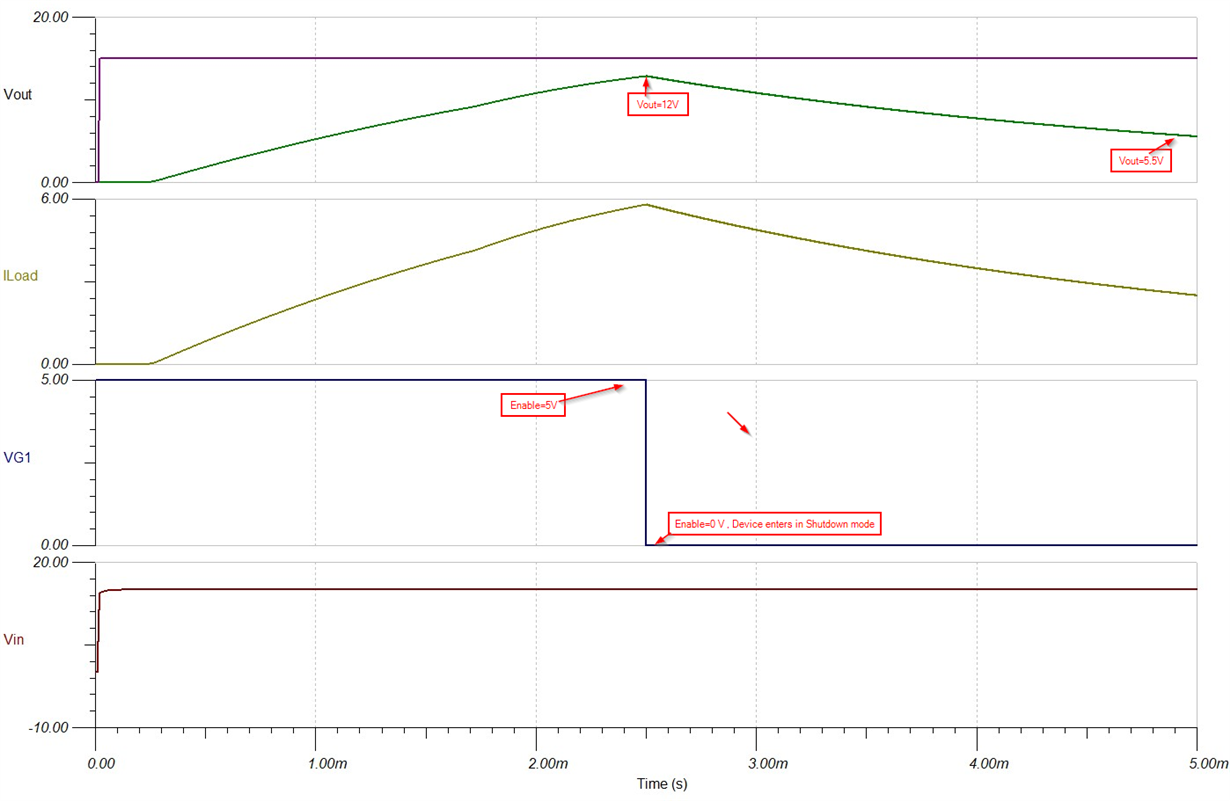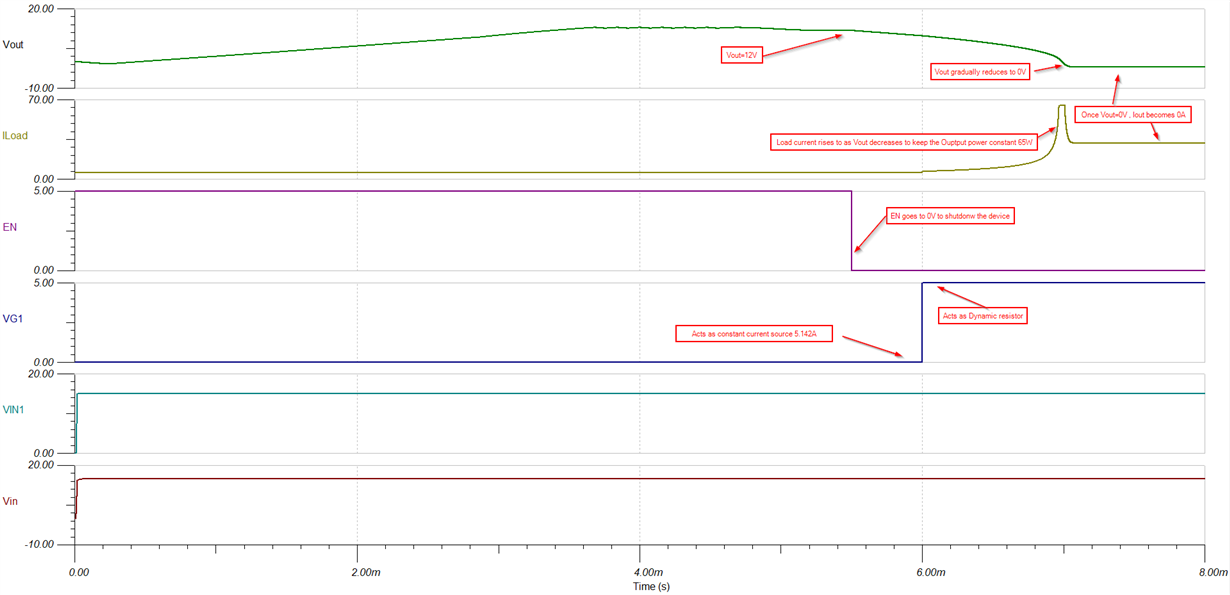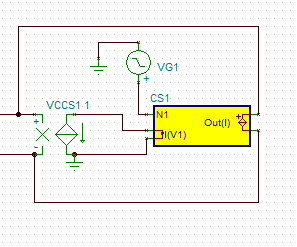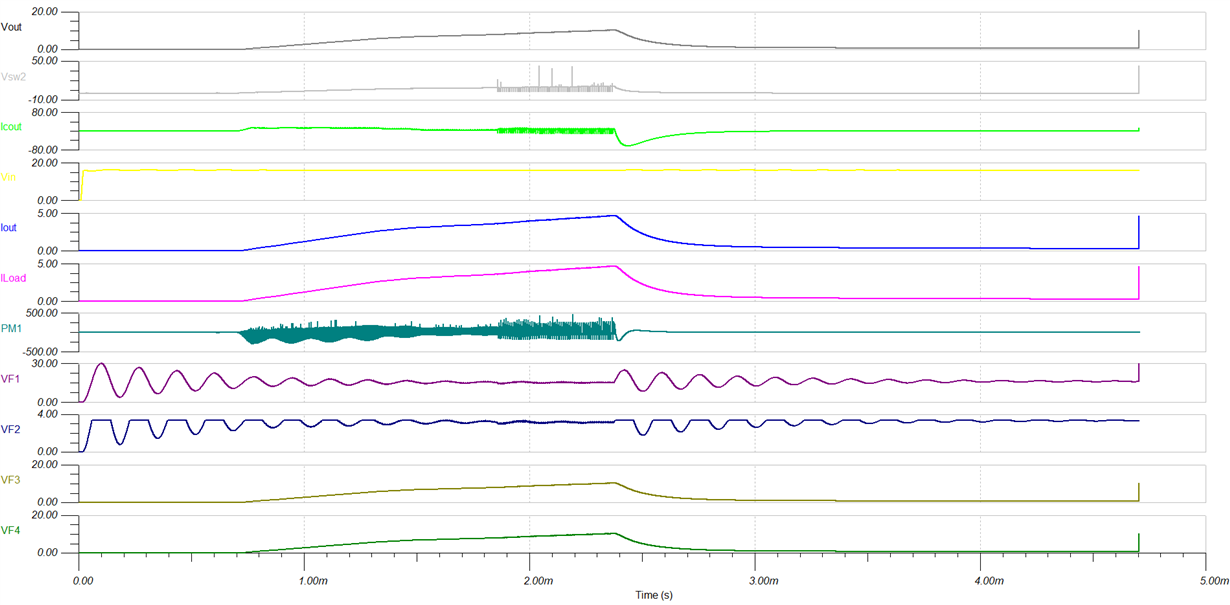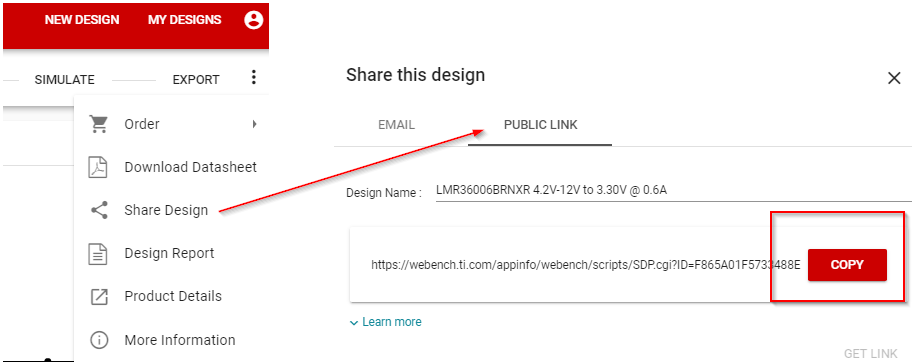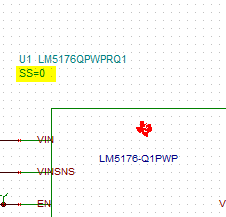Other Parts Discussed in Thread: TINA-TI, LM5176-Q1, , LM5176, CSD17304Q3, CSD19502Q5B, CSD16415Q5, CSD17573Q5B, CSD18514Q5A, CSD18533Q5A
Tool/software: WEBENCH® Design Tools
Hi,
I need a way to see how much time it takes the voltage to get down to 5.5 V, when the Power stays the same (65W for our purposes) -in shutdown mode.
I added a switch to the WEBENCH exported design but I can't change the load resistor to be a dependent load, it doesn't compile.
Is there a way to add a Power controlled load to the LM5175-Q1 Webench exported design?
I can see that currently there is a regular resistor there because the assumption is that the output voltage is pretty much the same.
I need my capacitors to hold the voltage for a few mseconds after shutdown and I currently don't see a possible way to simulate this option.
Thanks!
Anna


